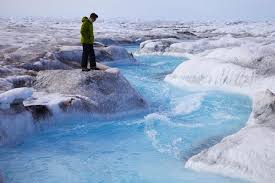Blue economy of the world

by Tufayel Ahmmed October 24, 2023
According to the World Bank, the blue economy refers to the sustainable use of ocean resources for economic growth, improved livelihoods, and job creation, while also preserving the health of ocean ecosystems. The European Commission defines it as encompassing all economic activities related to oceans, seas, and coasts.
The concept of the blue economy can be traced back to the principles of sustainable development. With increased international communication and in-depth study of the blue economy concept, more profound meanings are emerging. It is crucial to engage in interdisciplinary and multidisciplinary research when studying blue economy cases, particularly in integrating across different disciplines.
Coasts and oceans are among the most productive ecosystems on Earth. They provide a range of services that directly and indirectly support economic activity and growth. These services include protection from natural hazards, weather regulation, shoreline stabilization, carbon sequestration, wild-catch fisheries, renewable energy generation from wind, waves, and offshore oil, sea-bound trade, and tourism, among others. These services collectively form the foundation for an estimated annual global ocean economic activity of 3 to 5 trillion dollars. In some East Asian countries, the ocean economy can account for 15-20% of total GDP.
Since the 21st century, the concept of the blue economy has gained increasing popularity. In academic research, the literature on the blue economy mainly focuses on several aspects. Many countries have adopted the blue economy as a policy tool to drive economic growth and job creation. Marine industrial activities, such as construction, transportation, mineral resources development, shipbuilding, communication cable laying, pharmaceutical enterprises, equipment deployment, sustainable energy generation from waves and currents, seaside leisure tourism, and fisheries and aquaculture, are among the key focus areas. Additionally, the marine-oriented information and science sectors are playing an increasingly important role in promoting blue economy development.
In traditional “business-as-usual” models, nations tend to develop their ocean economies by exploiting maritime and marine resources, such as shipping, commercial fishing, and oil, gas, and mineral extraction. Unfortunately, the consequences of these activities on the future health or productivity of the resources and the surrounding ocean ecosystems are often overlooked. The blue economy offers a more holistic vision that prioritizes sustainable economic growth and avoids damaging other sectors. Similar to the green economy, the blue economy seeks to align human well-being, social equity, and environmental sustainability.
The blue economy not only provides economic opportunities but also safeguards and promotes more intangible “blue” resources, such as traditional ways of life, carbon sequestration, and coastal resilience. This approach aims to mitigate the devastating effects of poverty and climate change on vulnerable states.
The global ocean economy is currently valued at around $1.5 trillion per year, ranking it as the seventh largest economy worldwide. By the year 2030, it is projected to double in value to $3 trillion. The estimated total value of ocean assets, also referred to as natural capital, stands at $24 trillion.
Small island states, despite their limited land mass, possess extensive ocean resources. This presents a significant opportunity to boost their economic growth and address pressing issues such as unemployment, food insecurity, and poverty. However, they are also the most vulnerable to the degradation of marine resources.
In today’s world, sustainable development has become a strategic consideration for companies and investors who seek to thrive amidst various challenges in the coastal and marine environment. These challenges include population growth, technological advancements, climate change, loss of coastlines, marine pollution, overfishing, and other resource-related pressures. Companies face multiple operational, regulatory, reputational, market, and financial risks arising from the management of these ecosystems. In fact, the value for businesses in properly managing these ecosystems can range from 25 to 70 percent of earnings.
The concept of the blue economy has gained popularity as a potential driver of sustainable economic growth in the region. However, its definition and framework remain unclear, particularly for businesses. This report focuses on exploring the development of the blue economy and its specific significance in the East Asian region. It offers a practical definition and framework for businesses, along with surveys of companies operating in the region. The report examines nine key blue economy industries, highlighting important trends, risks, and opportunities in each industry. It also provides insights into governance, investment, and other crucial considerations for fostering blue economy growth in East Asia.
Coastal ecosystems are confronted with escalating threats that undermine their ecological health, environmental resilience, and socioeconomic potential. According to the United Nations Development Programme (UNDP), the global economy suffers substantial losses, estimated at US$350 to US$940 billion annually, due to overfishing, marine pollution, invasive aquatic species, coastal habitat degradation, and ocean acidification. Despite these profound impacts, the funds allocated to ecosystem and biodiversity conservation remain insufficient when compared to the enormous costs involved in safeguarding, restoring, and managing these invaluable resources. Experts estimate that there is a financing shortfall of at least US$300 billion per year, which may even extend into the trillions of dollars.
It is imperative to bolster investments aimed at protecting and augmenting vital coastal and marine ecosystems, while concurrently contributing to sustainable development. In this regard, the report delves into the examination of existing financial flows, amounting to approximately US$10 billion, within eight East Asian countries, specifically directed toward integrated coastal management (ICM)-related sectors. By scrutinizing various funding sources, such as bilateral and multilateral donors, foundations, development finance institutions, corporations, impact investments, and commercial investors across ten associated coastal and marine sectors, the report identifies regional and country-level trends in ICM funding. Furthermore, it provides recommendations for stimulating increased investments in these sectors.
The United States, as an ocean nation, has a thriving Blue Economy. Coastal communities in the U.S. are inhabited by a staggering 127 million people, representing 40% of the total population. In 2019, the American blue economy experienced faster growth than the entire national economy, providing employment to 2.4 million individuals and contributing an impressive $397 billion to the country’s gross domestic product (GDP). This growth is attributable to various activities, including tourism, recreation, shipping, transportation, commercial and recreational fishing, power generation, research, and related goods and services.
Furthermore, the gross domestic product associated with mariner-related industries expanded by 4.2% between 2014 and 2019, surpassing the 2.2% growth rate of the overall U.S. gross domestic product. Notably, the economic activity of America’s seaports witnessed a remarkable 17% growth from 2014 to 2018, amounting to $5.4 trillion. This constitutes nearly 26% of the nation’s $20.5 trillion gross domestic product (GDP). Despite the challenges posed by the COVID-19 pandemic, American seaports continue to invest in terminals and piers, and there is an expectation that the demand for maritime commerce will triple by 2030.
To put the significance of coastal counties into perspective, if they were viewed as an individual nation, they would rank third globally in terms of GDP, trailing only the United States and China. Clearly, the prosperity and security of the nation heavily rely on the understanding, health, and sustainable use of our oceans, coasts, and Great Lakes.
Marine and coastal tourism are of paramount significance to many developing nations. Despite the global economic crisis, international tourism has continued to thrive. In 2012, international tourist arrivals witnessed a 4% increase, reaching 1.035 billion and generating US$1.3 trillion in export earnings. Projections by the UNWTO indicate further growth of 3-4% in 2013. However, economies heavily reliant on a single industry face vulnerability. The sector of tourism presents challenges, including increased levels of greenhouse gas emissions, water consumption, sewage, waste generation, and the loss or degradation of coastal habitat, biodiversity, and ecosystem services.
Whale and dolphin watching tourism represents one of the fastest-growing marine tourism sectors globally, and its popularity is on the rise in the IORA region. Engaging in whale and dolphin watching tourism can bring economic, social, and environmental benefits, fostering inclusive economic growth and job creation for coastal communities. Moreover, it encourages the protection of marine species and their habitats.
The Indian Ocean region boasts a rich diversity of marine species, including vulnerable ones such as the Indian Ocean humpback dolphin and the Arabian Sea humpback whale. These species hold cultural significance for many member states. Given the escalating threats to ocean health and marine life, it is crucial to ensure that whale and dolphin watching activities are conducted ethically, sustainably, non-invasively, and with utmost safety for both tourists and animals.
The escalating human population, intensification of agriculture, and rapid urbanization of coastal areas significantly contribute to increased levels of pollution in our seas. The documented phenomenon of marine “dead zones” has surpassed 400 in number, covering an area of over 240,000 km2, including several previously productive estuaries and shelf areas.
Marine debris poses a grave threat to the integrity of marine food chains. Plastic materials and other forms of litter are widely dispersed from oceanic collection zones and gyres. The glutinous mass of micro-plastics can now be found in certain waters, while debris and pellets frequently accumulate in the gastrointestinal tract of sea and bird life. International mechanisms, such as Regional Seas Conventions and MARPOL, have been established to address these concerns. However, their implementation requires renewed vigor, while considering the true costs and benefits of rectifying these issues in the context of our natural blue capital.
The responsibility for resources and sustainable development lies with each sovereign country. The significance of national policies and development strategies should not be undermined. Nevertheless, the principle of common but differentiated responsibilities remains applicable. Undoubtedly, structured international cooperation serves as a foundation for all aspects of the Blue Economy. This includes updating and advancing governance mechanisms to ensure the sustainable development of waters beyond national jurisdiction, such as maritime security, high seas MPAs (marine protected areas), sustainable fisheries, and oil and mineral extraction. Furthermore, assistance is required to enable the effective management and utilization of national EEZs (exclusive economic zones), through technology transfer, technical support, marine spatial planning, capacity building, finance for national marine spatial planning, and the establishment of efficient monitoring, control, and surveillance systems. Research plays a vital role in fostering international cooperation for the Blue Economy approach, as it provides a science-based foundation for its development.
To accomplish the required international cooperation and support in order to elevate the Blue Economy to the international sustainable development agenda37, diplomatic efforts have been focused on the preparatory process leading up to the Third International Conference on Small Island Developing States in Apia, Samoa 2014. The Government of Seychelles, together with its partners, has undertaken the challenge of advocating for the inclusion of the Blue Economy on the international agenda. This initiative has gained significant support at various key events, such as the 21st African Union Summit (19-27 May 2013), the Tokyo International Conference on African Development (TICAD V) from 1-3 June 2013, the 1st Indian Ocean Rim Association for Regional Cooperation (IOR-ARC) Economic and Business Conference held on 4-5 July 2013, and the AIMS meeting in Seychelles from 17-19 July 2013.
To further advance this cause, a “Blue Summit” is proposed to be held in Abu Dhabi in January 2014. This event will take place within the framework of the Sustainable Development Week and will receive support from the Government of the United Arab Emirates. The aim of the summit is to enable SIDS groupings and other partners, such as IOR-ARC, to make contributions towards an internationally endorsed Blue Economy document. This document will be presented at the Third International Conference on Small Island Developing States in Samoa in 2014. Successful development and endorsement of the proposal in Samoa will mark a significant milestone in gaining international momentum and acceptance for the Blue Economy as a distinct approach, which complements the Green Economy model.
In the context of the blue economy, measures are taken to mitigate or significantly reduce the environmental risks and ecological degradation resulting from economic activities. However, despite its potential, the concept of the blue economy has yet to be fully integrated into mainstream practices for various reasons. Consequently, there is a pressing need for innovative policies, technologies, and financing tools that foster collaboration, facilitate the integrated management of resources, promote partnerships between governments and industry, encourage research and development in emerging technologies, and leverage investments across established and emerging sectors of the blue economy. These sectors encompass sustainable fishing, sustainable aquaculture, marine biotechnology, marine renewable energy, coastal water resources management, and blue carbon ecosystems and ecosystem-based adaptation. Lastly, the development of innovative financial approaches is essential to accelerate the transition towards a truly sustainable blue economy.
I’m Tufayel Ahmmed. Bangladesh is my homeland. I completed my graduation and post-graduation from department of chemistry university of Rajshahi (Rajshahi, Bangladesh). My email address is ‘tufayelahmmed.chem.ru@gmail.com’.
articlebiz.com







No Comment